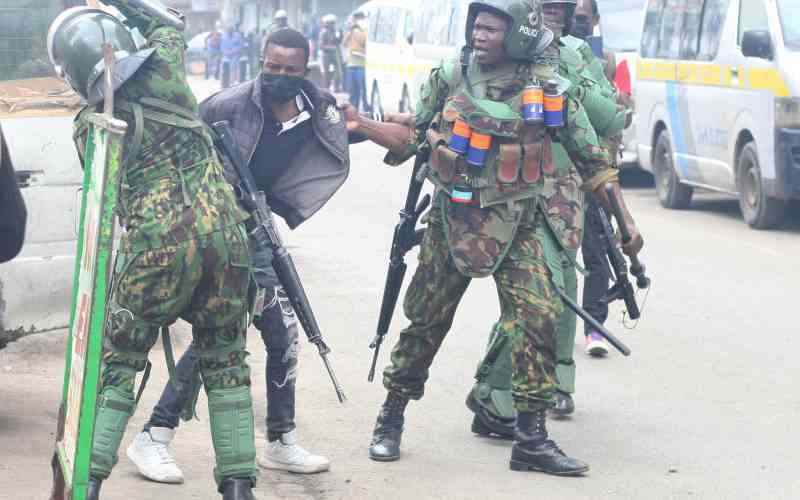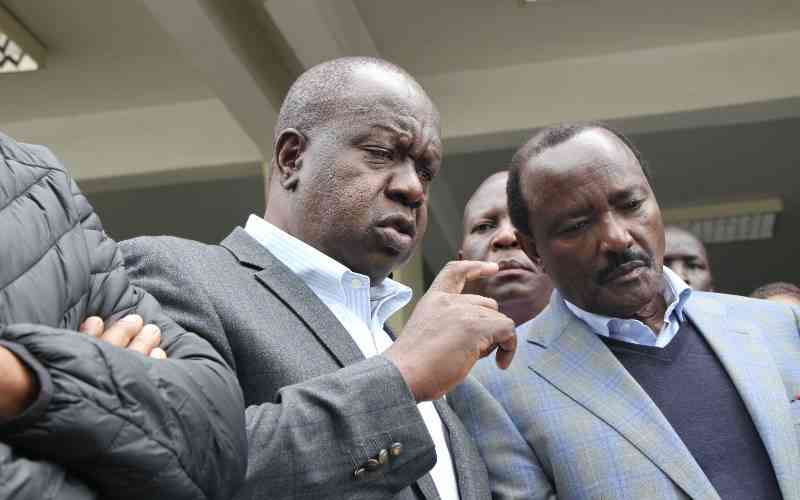
The High Court in Nairobi on Friday ordered the police not to throw teargas or water into hospitals, churches or closed places, including vehicles.
Justice Bahati Mwamuye issued the orders in a case filed by the Kenya Human Rights Commission (KHRC) against the Inspector General of Police and the Attorney General.
The Judge directed that the police or anyone assisting them to quell protests should not use teargas, water cannon on any protestors who have sought refuge in closed places, churches or hospitals until the case filed on Friday is heard and determined.
He also barred the police from firing tear gas or using water cannons in areas where people will scramble to leave or have limited ventilation.
“ Pending the inter partes hearing and determination of the petitioner or applicant's notice of motion application dated June 26,2025, a conservatory order be and is hereby issued restraining the first respondent and all officers and personnel of the National Police Service and or all officers and personnel of any other agency acting in concert with or assisting the National Police Service in the discharge of its law enforcement functions from deploying teargas or similar chemicals, water cannon, or other crowd-control measures against unarmed and peaceful persons assembling, demonstrating, picketing, and or petitioning public authorities who have thereafter entered into or taken shelter in vehicles, closed or semi-closed spaces, or areas with limited ventilation or limited avenues of safe and orderly exit,” ruled Justice Mwamuye.




In the case, KHRC’s lawyer Schola Munyao said that the police cordoned off roads leading to the Nairobi and Kenyatta National Hospitals, hurled tear gas canisters and fired live bullets towards the protestors, leading to chaos, injuries and even deaths.
She claimed that it was absurd that the police were using teargas on a health facility located near the Jamia Mosque, where they were also being rushed after being injured.
“In a bizarre and most unexpected and unfathomable twist of events, the Is Respondent's officers at around 2 p.m. hurled teargas cannisters at the said medical unit thus hurting the personnel working hard to treat the injured and those who had already suffered other injuries and had been rushed here for care and treatment,” said Muyao.
She added that those who had also sought refuge at the All Saints’ Cathedral were also given a dose of the toxic chemical, despite the holy ground being a safe haven for all.
“That there is a risk that with the country experiencing these demonstrations that the respondent's officers will continue to attack such safe spaces to the detriment and suffering of medical personnel who volunteer to assist the injured under difficult circumstances, contrary to the law,” she said.
KHRC’s director Davis Malombe told the court that the police were firing live bullets into the hospital.
He argued that churches, mosques, ambulances, hospitals and emergency/ temporary medical units should not be teargassed or shot at during public demonstrations or any other form of civil unrest.
“ That the right to a safe working environment under the Health Act creates a specific obligation to protect both healthcare workers and patients from unnecessary harm. The use of teargas in medical zones violates this right by intentionally creating hazardous conditions in spaces that should remain safe for treatment and recovery. The Act's protections apply to ambulances and emergency medical responders during protests,” said Malombe.
According to him, the Nationai Police Service Standing Orders provide clear limitations on the use offorce during public order management.
Stay informed. Subscribe to our newsletter
Among the prohibited places, he argued are hospitals and medical zones.
“Medical facilities enjoy special protected status that must be respected in all circumstances, including during civil unrest,” he said adding that the police breached both local and international laws on managing protests.
He directed the AG and IG to respond to the case. It will be heard on August 11, 2025.